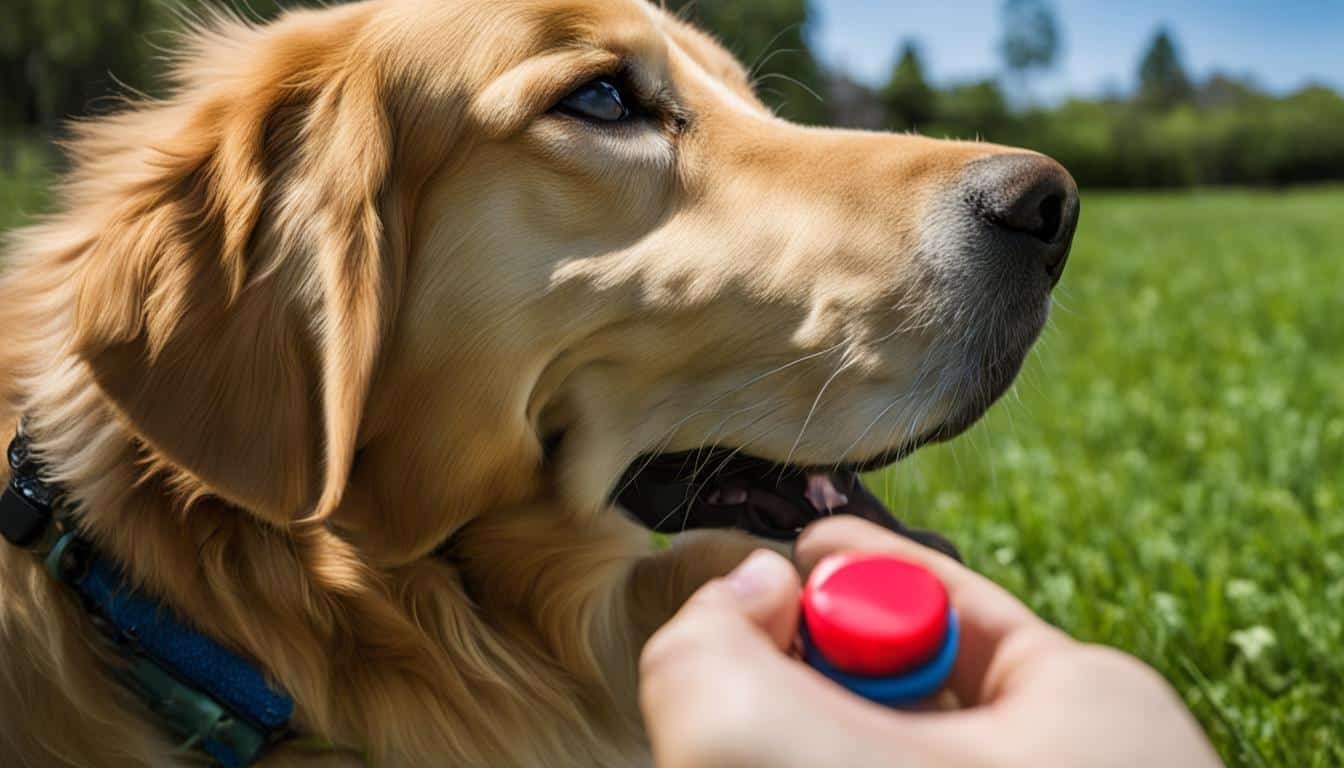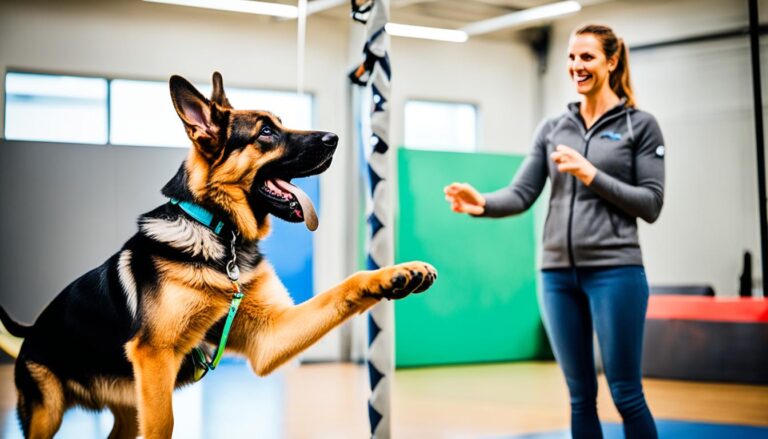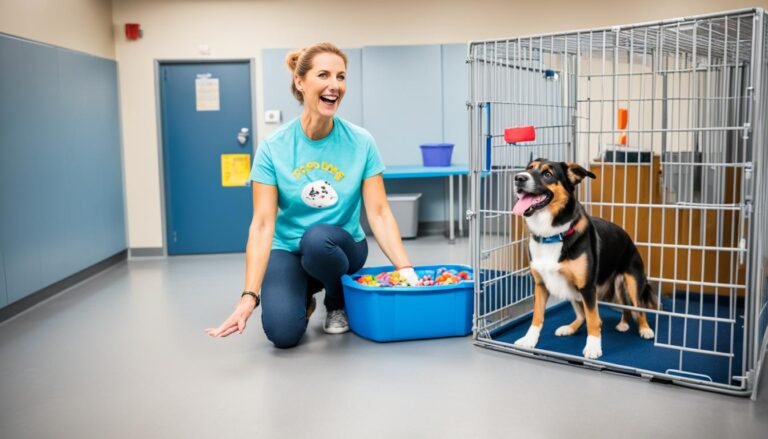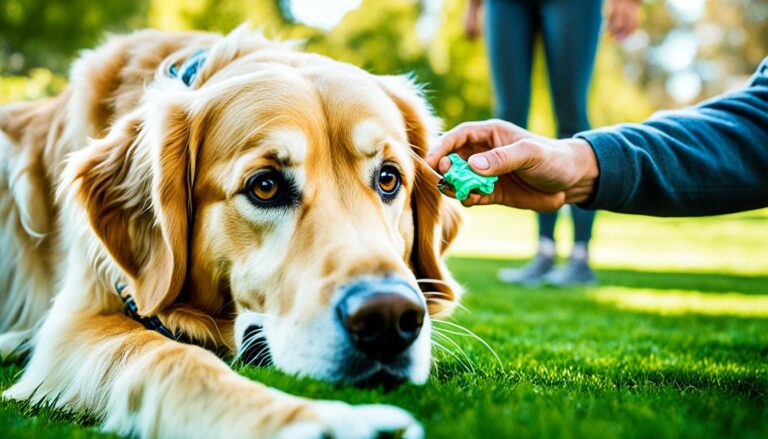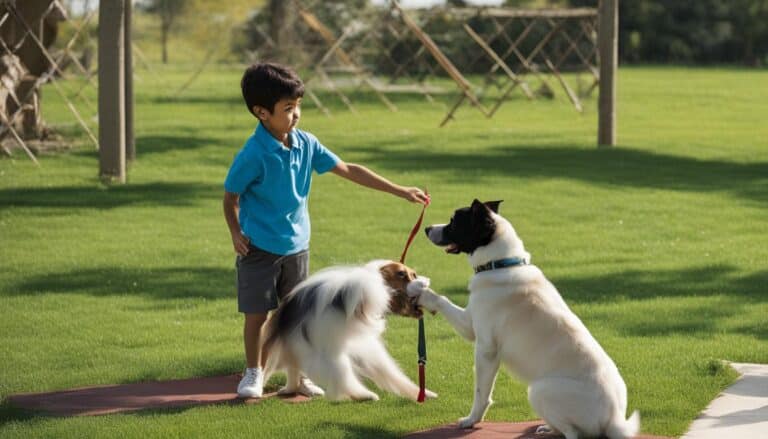What Is Clicker Training for Dogs
Imagine this: you’re out for a walk with your furry friend, Max. As you stroll through the park, Max spots a squirrel and instinctively lunges forward, pulling hard on the leash. You try to get his attention, but he’s completely focused on the squirrel. Frustrated, you give a gentle tug on the leash, hoping to redirect his attention. But it’s no use, Max is determined to chase that squirrel.
Now, imagine a different scenario. You’re out for a walk with Max, equipped with a small device called a clicker. As Max spots the squirrel and starts to pull, you press the clicker and immediately give him a treat. Max looks at you, momentarily distracted from the squirrel. You take the opportunity to give a command, “Max, sit!” and click and treat when he obeys. Max quickly learns that the click sound means a reward is coming, and he starts to pay more attention to you during your walks.
This is the power of clicker training for dogs. It’s a form of positive reinforcement training that uses a clicker as a tool to communicate with your dog. The clicker is paired with a treat or reward and becomes a conditioned reinforcer. Its distinct sound helps to mark the moment your dog performs the desired behavior, making training more efficient and effective.
Clicker training focuses on rewarding the behaviors you want to see, rather than punishing or correcting the ones you don’t. It’s based on the principle that behaviors that are rewarded are more likely to be repeated in the future. Clicker training can be used to teach new commands, shape behaviors through baby steps, capture good behavior, and even teach fun tricks.
In the upcoming sections, we’ll explore the importance of clicker training, how to start clicker training with your dog, the benefits of this training method, how to use it in different situations, and how to incorporate it into your dog’s routine. Get ready to take your dog’s training to the next level with the click of a button!
The Importance of Clicker Training
Clicker training is a powerful tool in dog training that offers numerous benefits for both trainers and dogs. By incorporating positive reinforcement and the use of a clicker as a marker, clicker training enhances communication and clarity between trainers and their dogs.
The main advantage of clicker training is its ability to accurately and immediately convey to the dog which behavior is being rewarded. The clicker serves as a clear and consistent signal to let the dog know that they have performed the desired behavior correctly. This clarity helps dogs understand what is expected of them and motivates them to repeat the desired behavior in order to receive the reward.
Furthermore, clicker-trained dogs tend to enjoy training sessions and see it as an engaging game. Instead of focusing on mistakes and corrections, clicker training allows trainers to focus on their dog’s good choices and progress. This positive approach builds a strong bond between trainers and dogs, creating a positive training environment.
Clicker training also boosts communication between dogs and their trainers. By using the clicker as a marker, trainers can provide immediate feedback and reinforcement, making the training process more efficient and effective. Dogs become more attentive and responsive, actively seeking out opportunities to perform the desired behaviors.
Overall, clicker training is not only a practical and effective training method, but it also promotes a positive learning experience for dogs. Incorporating clicker training into your dog’s training routine can lead to better obedience, faster learning, and a stronger bond between you and your furry friend.
How to Start Clicker Training
To begin your clicker training journey, you’ll need a few essential tools: a clicker and some treats that your dog loves. This combination will help you effectively communicate and reinforce desired behaviors. Let’s dive into the step-by-step process of getting started with clicker training.
- Loading the Clicker: Start by “loading” the clicker, which means associating the click sound with a tasty treat. Click the clicker and immediately offer your dog a treat. Repeat this several times to help your dog understand that the click sound predicts a reward. This simple exercise will form the foundation of your clicker training sessions.
- Mark and Reinforce: Once your dog has a clear understanding of the clicker, you can begin using it to mark and reinforce desired behaviors. Click at the precise moment your dog performs the behavior you want and follow it immediately with a treat and praise. This timely reinforcement helps your dog make the connection between the behavior and the reward.
- Consistency and Timing: Clicker training relies heavily on consistency and precise timing. Be sure to consistently click at the exact moment your dog exhibits the desired behavior. Reinforce that behavior with a treat and enthusiastic praise to reinforce the positive association. This consistency will help your dog understand what is expected of them and accelerate their learning process.
- Shaping Behaviors: Clicker training allows you to shape behaviors through a series of small steps. Break down complex tasks into achievable milestones and click and reward your dog for each incremental improvement along the way. This gradual shaping process helps your dog understand and perform more complex behaviors over time.
- Capturing Good Behavior: Pay attention to your dog’s spontaneous good behaviors and quickly capture them with the clicker. For example, if your dog lies down without any prompting, immediately click and reward that behavior. This technique helps reinforce and increase the likelihood of those good behaviors happening again in the future.
- Reducing Treat Dependency: As your dog becomes more proficient in clicker training and understands the association between the click and the reward, you can gradually reduce the use of treats. Start by intermittently rewarding with treats rather than every time you click. Eventually, your dog will respond to the click alone as a positive reinforcement signal.
Mastering clicker training techniques requires patience, consistency, and practice. Remember to always keep the training sessions fun and enjoyable for both you and your furry friend. Now that you know how to start clicker training, you’re ready to embark on this positive and rewarding training journey.
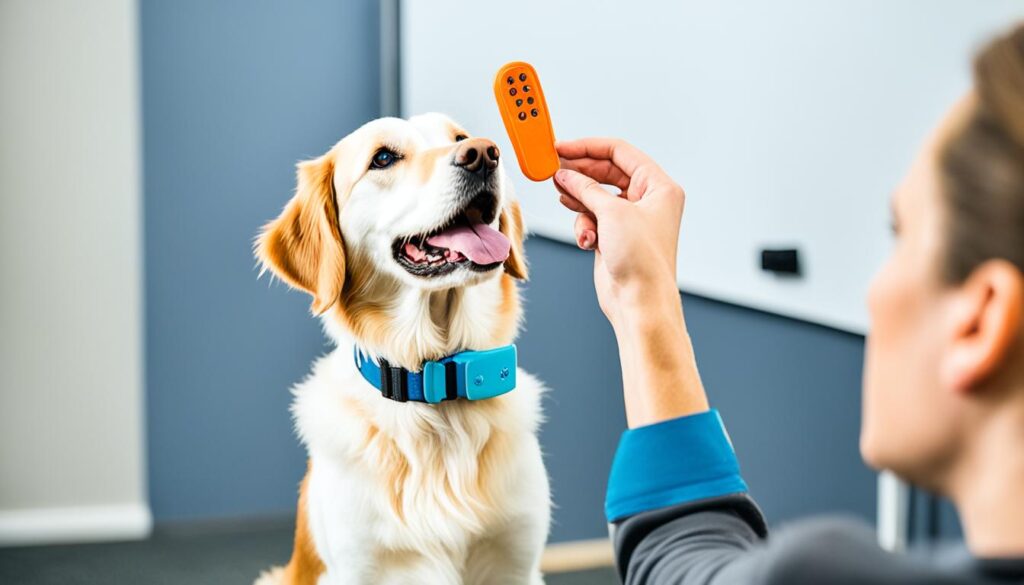
Benefits of Clicker Training
Clicker training is a highly effective and positive reinforcement method for both puppies and adult dogs. It offers numerous benefits that contribute to their overall well-being and their relationship with their owners.
Benefits for Puppies:
- Clicker training aids in socialization by exposing puppies to various stimuli in a positive and controlled environment. This helps them feel more comfortable around people, animals, and different situations.
- By using clicker training, puppies gain confidence as they learn new skills and receive consistent positive feedback. This boosts their self-esteem and encourages them to try new things.
- Establishing a positive and trusting relationship is crucial for puppies and their owners. Clicker training fosters a strong bond based on trust, love, and mutual respect.
- Mental stimulation is essential for puppies to prevent boredom and destructive behaviors. Clicker training engages their minds and challenges them to think and problem-solve.
- Clicker training helps puppies understand and follow commands, setting a solid foundation for obedience training and good manners.
Benefits for Adult Dogs:
- For adult dogs, clicker training can address behavioral issues in a positive and gentle manner. It allows owners to redirect and reinforce desired behaviors effectively.
- Reinforcing good behavior through clicker training helps adult dogs understand their owners’ expectations and encourages them to make positive choices.
- Teaching new tricks or commands to adult dogs becomes enjoyable and rewarding with clicker training. They continue to learn and grow throughout their lives.
- Clicker training strengthens the bond between adult dogs and their owners. It promotes a positive and loving relationship built on trust and effective communication.
- Dogs with hearing impairments can still benefit from clicker training. Instead of relying on the click sound, a visual cue like a light or tap on the shoulder can be used as a substitute.
By incorporating clicker training into your dog’s routine, you create a harmonious environment where positive behaviors are consistently reinforced. This training method offers lifelong benefits, regardless of your dog’s age. Whether you have a playful puppy or an adult dog, clicker training paves the way for a happier and more fulfilling relationship with your furry companion.
Using Clicker Training in Different Situations
Clicker training is a versatile method that can be utilized in various situations and for different purposes. Whether you’re working on basic obedience or addressing behavioral issues, clicker training can be a valuable tool in your dog’s training journey.
Basic Obedience Training
Clicker training is highly effective for teaching your dog foundational commands such as sit, stay, lie down, and come when called. By using the clicker to mark the desired behavior and following it with a treat, you can communicate clearly with your dog and reinforce the behavior you want to see more of.
Addressing Behavioral Issues
If your dog tends to jump, bark excessively, or pull on the leash, clicker training can help address these behavioral issues. By clicking and treating your dog when they exhibit the desired behavior, you can redirect their focus and encourage them to engage in more appropriate behavior.
Shaping Complex Behaviors
Clicker training allows you to shape complex behaviors by breaking them down into smaller, more manageable steps. Through shaping, luring, and capturing, you can guide your dog towards the desired behavior and reinforce their progress along the way. This method is particularly useful when teaching tricks or advanced commands.

Beneficial for Puppies
Clicker training is especially beneficial for puppies as it helps them learn good manners and appropriate behavior from a young age. It establishes a positive and structured training routine, allowing them to develop essential skills and behaviors that will benefit them throughout their lives.
Whether you’re training a puppy or an adult dog, incorporating clicker training into your training regimen can enhance the bond between you and your furry friend. It promotes positive reinforcement, encourages communication, and fosters a mutual understanding.
Incorporating Clicker Training Into Your Dog’s Routine
To see continued progress in your dog’s training, it’s important to incorporate clicker training into their daily routine. This training technique, based on positive reinforcement, helps reinforce desired behaviors and strengthen your bond with your furry friend.
Make clicker training sessions enjoyable for your dog by using a variety of treats, toys, and praise. This keeps them engaged and motivated to learn. Consistency is key, so set clear expectations for your dog and be consistent with the signals you use.
During training sessions, use the clicker to mark and reward behaviors that you want to see more of. By associating the clicker sound with positive reinforcement, your dog will understand what they did right and be encouraged to repeat the behavior. Remember to be patient and positive with your dog as they learn, as this will keep the training experience enjoyable for both of you.
As your dog becomes more proficient in their training, gradually decrease the reliance on treats and focus more on using the clicker as the primary reward. This will strengthen their response to the clicker and solidify their understanding of the desired behaviors. With regular practice and reinforcement, clicker training will have a long-lasting and positive impact on your dog’s behavior, as well as your relationship with them.
